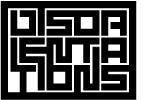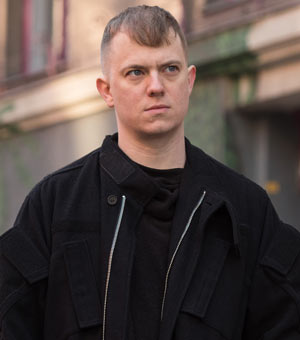Sung Hwan Kim
by Travis Jeppesen on November 8, 2013
For Sung Hwan Kim, ideas are less the thing than stories. “I know that it doesn’t matter if things are true or not,” Kim begins in From the Commanding Heights…, 2007. “But this is a true story.” He launches into a narrative that starts out believably enough but grows increasingly fantastical, about a woman with a preternaturally long neck and a third ear on top of her head. As we hear his recorded voice, we see the artist’s face above a transparent sheet, which he draws on to illustrate the bizarre fable. From the Commanding Heights… jumps from one narrative mode and style to the next, often with confrontationally abrupt transitions. Suddenly, we are presented with an image of the Seoul apartment building Kim lived in as a child, and the story that comes with it, which presents yet another type of truth: rumor. (It was said that when the lights in the complex went out, the Korean president was arriving incognito to visit his mistress.) Further narrative shifts give us “a day in the life,” following musician David Michael DiGregorio, here a proxy for Kim, in his quotidian peregrinations; and footage of a Lynchian surveillance tape, flickering on a monitor, of a masked figure, shot from above, reversing the perspective we began with.
If we were to try to untangle the chaos of codes at play in From the Commanding Heights…, we might posit that there is a crisis in being and becoming that is probed here – but also elsewhere. Kim’s oeuvre is a strange network of gestures whose totality is not easily homed in on. Narrative seems to come apart and reconstitute itself perpetually, governed by the ambivalent logic of rumor – that most contemporary mode of storytelling, in which epistemological certainty is eclipsed by constant speculative flux. Kim never makes it easy: His projects, which may incorporate performance, sculpture, and the moving image, are often unfurled in complicated rituals alongside his frequent collaborators, DiGregorio and artist Nina Yuen; one performance, Pushing Against the Air, 2007 – in which Kim interview DiGregorio and a fellow musician, Byungjun Kwon, about love songs they have composed – had an air of spontaneity about it when it was first performed at Amsterdam’s De Appel, but was repeated in several cities and venues with only slight variations. Some of the material was later used in a video; in Kim’s art, works are not clearly separated from one another. The restlessness of the artist becomes its own world, and the emphasis is less on establishing a firm, static position than on the impetus to keep moving – and forming a terrain in the process, much like a spider spins its web, oblivious to the constraints of linear time. Kim’s persistent return to a lo-fi aesthetic – his sometimes fuzzy footage, his creation of “special effects” from transparent plastic sheets – is a part of this becoming, as if to be too polished is to arrest momentum, to partake of an ossified visual economy. His videos also have a tendency to centrifugally disperse themselves into space: Kim imbricates the moving image in complex environments, a tendency that may bespeak the influence of his mentor, Joan Jonas. In his 2012 exhibition at the Tanks at Tate Modern in London, for example, a welter of video screens, black panels, mirrors, tinsel, curvilinear seating, and lights created an insubstantial matrix of shifting visual planes and fragments.
A number of Kim’s works engage with the history of the Korean peninsula throughout the past century, which is in many ways a saga of a land attempting to articulate its own identity, to become itself while struggling for sovereignty. Near the beginning of the twenty-four-minute video Temper Clay, 2012 – whose very title evokes a process of becoming, of wrestling form from inchoate matter – a series of intertitles proclaims, IT IS GOOD TO HAVE A PATCH OF LAND / BUILD A HOUSE / LIVE IN IT / GET SOMEONE/ TO TAKE CARE OF YOU. The black-and-white montage that follows illustrates this simple idea and the complications that arise from it: A man makes an ax handle out of a stick of wood; a young girl speaks affectionately, in Korean, to said ax, lying next to it like a lover in what looks like an isolated stretch of forest; a second girl appears, and the two fight over the ax; a wood fire replaces the ax as the object of the girls’ competing affection. It continues unrelentingly, from one association to the next: bare feet walking back and forth across a floor as a woman frantically attempts to clean it with a rag, the installation of US military units in cities and towns throughout South Korea in the 1960s. We return to the forest, where a voice intones: “Where is your wife? Where is your husband?” (With rare exceptions, North and South Koreans have been forbidden to visit family members on the other side since the peninsula’s partition.) Finally, we see a man, standing before a river, on the other side of which is a house. Now he has the fire with him: It is in a can, attached to a wire, which he swings around him with increasing fury.
The film is an elegy for the dream of certainty. Where Deleuze and Guattari famously suggested that the primal impulse to make art can be found in the animal when it builds its own home, Kim’s stories suggest that for humans – for whom notions of identity and territory have become intertwined – this impulse is always fraught, always compromising. The desire to build a house and stay as long as you can has been perverted by our own failed attempts at establishing order throughout the mess of history. Kim’s work implies that art’s task is to unravel those knots – even if doing so requires weaving yet more tangled paths.
This essay originally appeared in the March 2013 issue of Artforum.


Leave your comment